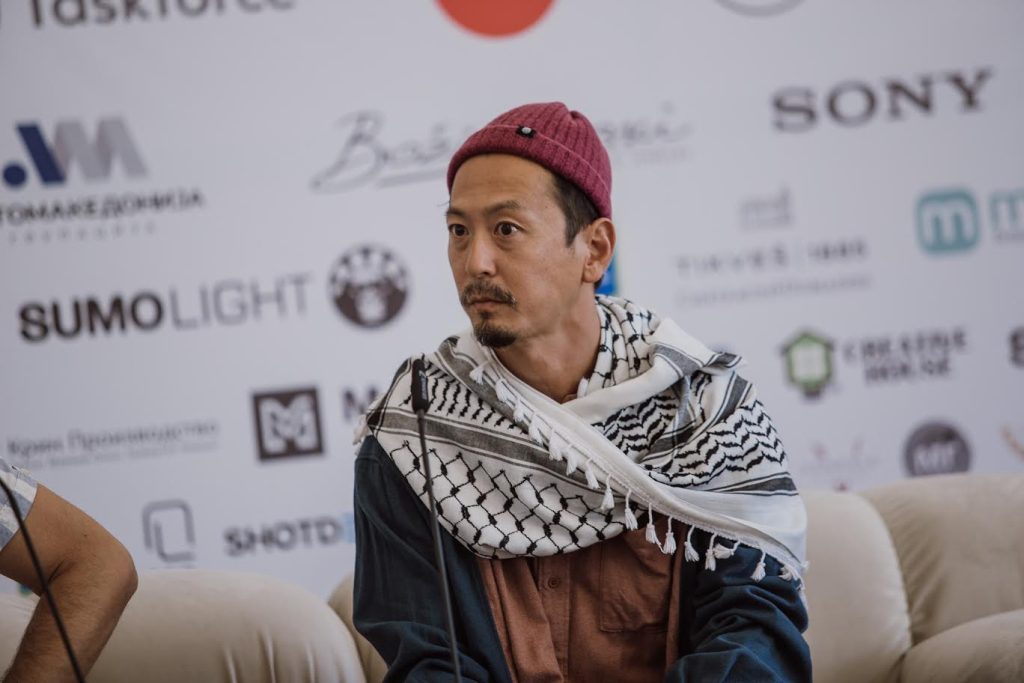Kardalevski: The situation with the Macedonian film is probably the most difficult ever

Yoshio Kitagawa, a Japanese cinematographer, whose film „Evil Does Not Exist“ was screened on „Manaki Brothers“ yesterday within the Official Camera 300 selection, spoke at today`s press conference about his experiences with director Ryusuke Hamaguchi, with whom he had already filmed „Happy Hour3.
Kitagawa noted that they had collaborated making short films and that he was happy to have the opportunity to work with him after the great success of the film „Drive My Car“.
“With this film he became very popular in Japan, but also abroad, but for the film „Evil does not exist“ he did not have a very large budget. The composer with whom they collaborated on the film „Drive My Car“ offered to visualize her music at the film festival in Ghent, Ryusuke accepted it, and then I also joined and we began the collaboration”, Kitagawa said.
Takumi and his daughter Hana live in a village near Tokyo. Like their ancestors, they live modest lives that follow the cycles and order of nature. One day, when representatives of a company arrive from Tokyo to present a plan to build a glamorous camp ("glamp") that will offer the residents of the city the opportunity for a luxurious „escape to nature“, it becomes clear that the project will harm the local water supply.
„Actors are not professionals and they perfectly present the idea that not everything is black and white, and that evil sometimes exists and sometimes does not. The film makes the audience thinks about what nature means to us and also makes them come to the cinemas”, Kitagawa said, thanking for the wonderful experience of being part of the „Manaki Brothers“ program.
In the European Lo-Sap program, yesterday the audience could see the film „Run“ by Kazakh cinematographer Azamat Dulatov.
The film depicts Kazakhstan during the Soviet Union, in the 1930s, a time marked by the rapid collectivization of farms by Stalin and by the most brutal famine the modern world has ever seen. Local undertaker Isatai must face a difficult choice.
„Before shooting the film, I had already worked on music videos and commercials with the director and we constantly talked about making a film and this time we decided to do it. We made preparations with the script, the actors, we searched for locations and after we were ready the filming began. Because of the good preparation, the shooting went very smoothly”, Dulatov said at today`s press conference, and stressed that his education helped him a lot in mastering the presentation of the scenes filmed in the steppes, because, as he said, he graduated in fine arts.
Cinematographer Yoshiko Takano, through the camera, told an interesting story with the documentary film „Gama“.
In Okinawa, the place where intense land battles took place towards the end of World War II, there are many natural caves called „GAMA“. Mitsuo Matsunaga collects remnants of the Battle of Okinawa and describes how the civilians who took part in the war took refuge in GAMA.
„We tried to tell the history of GAMA in Okinawa. GAMA caves are not known to many in Japan, but in this way through the film people will learn more about these shelters. We brought visual poetry into the documentary, and the viewer follows the events through the eyes of the girl”, said Takano, who pointed out that they were filming in November which is the most favorable period for filming because it is very warm in that area.
Several films were screened in the short program yesterday. At today`s press conference, the cinematographers Dushan Kardalevski, Kinan Massarani and Peter Kalonji spoke about their experiences from cooperating with the directors.
“On the one hand, it is difficult to work with a director, in my case it is my sister, but on the other hand, it is easier for some things. She is very precise, and when she prepares the film she comes with a book and immediately says what she wants the shooting to look like, so it is simple to work this way”, said Kardalevski, who is the cinematographer of the film „State of Mind“ directed by Aleksandra Kardalevska. The film talks about a chance encounter between a photographer and a mysterious girl, which leads to a night of shared intimacy and connection. But the new day reveals a hidden truth that casts a shadow over their romance.
„This was the first time I shot with a Sony camera, and I used light from nearby outlets. I also bought filters, but due to the high air pollution while we were filming, there was no need to use them“, said Kardalevski, who underlined that they filmed one afternoon and one night.
Answering a journalist`s question, Kardalevski pointed out that the situation in the Macedonian film is perhaps the most difficult than ever, but that they hope that better times will come. Also difficult is the situation with co-productions for both feature-length and short films, but if you have a good project, a good script, it is still possible to realize it.
Kinan Massarani, the cinematographer of the film „Good Boy“, which is actually the first film by director Paul Vincent de Lestrade, said that there was no need to guide Paul as more experienced, because Paul was very sure in himself, had already made a film as a student and there was no need for help.
The film tells the story of Maxim who is sixteen. As a hopeful swimmer, he is on his way to enroll in a sports study program. One afternoon, police interrupted the training to talk to his coach, who has been accused of sexual abuse by one of the club`s young swimmers.
Peter Kalonji, on the other hand knows the director Rebeka Rummel from their school days and had no difficulties in cooperation.
The movie „Drifting Apart“ tells the story of Vera who goes to the Soviet resort to join her astronaut husband, Alexei. But the summer idyll is disturbed by her suspecting her husband, which secretly embitters her soul.

